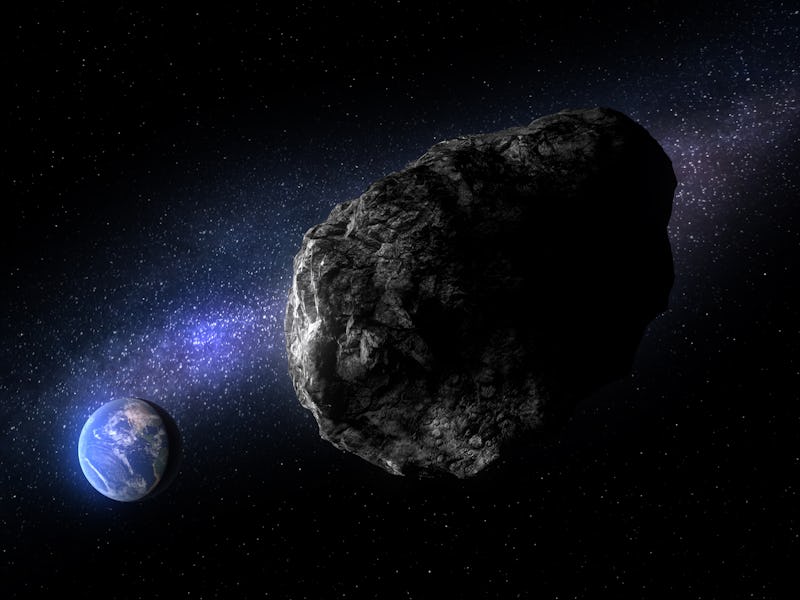2022 GN1: A bus-sized asteroid will whoosh near Earth tomorrow
The just-discovered asteroid will come within 79,000 miles of Earth.

We’ve only just met asteroid 2022 GN1, and it's already on its way out the door — but not before coming slightly closer than comfortable to Earth.
The asteroid, announced yesterday by the Minor Planet Center’s Minor Planet Electronic Circular, will come within 79,000 miles of Earth — or about one-third the distance between Earth and the Moon. Fortunately, though, the asteroid will pass us by without posing any harm to Earth and those living on it. Us earthlings will, however, get the chance to witness the asteroid on its journey.
How big is 2022 GN1?
The asteroid is estimated to be between 23.6 and 52.5 feet. Because we simply love to compare objects in space to objects on Earth, it’s estimated to be between the length of a city bus and a single letter of the Hollywood sign. Or between 1.3 and 2.8 giraffes, if that’s your preferred unit of measurement. Or if you prefer a sports analogy, between 3.3 and 7.4 Shaquille O’Neals stacked on top of each other. That’s a lot of Shaqs.
As the asteroid passes harmlessly by, observatories like the Virtual Observatory will still live stream the encounter starting tonight at 9 p.m.
What would happen if 2022 GN1 struck Earth?
The asteroid previously escaped detection because of its small size. While most large near-Earth objects have been cataloged, various agencies and other observatories are working on finding increasingly smaller ones. Not the type to kill the dinosaurs, mind you, but enough to wreak local havoc if they come into our atmosphere.
For instance, the Chelyabinsk meteor, which was a similar size to 2022 GN1, exploded above the Russian city of the same name in 2013, causing more than 1,000 people to report injuries requiring medical assistance, most often from broken glass. It released about 20 to 30 times the power of the atomic bomb used at Hiroshima, avoiding widespread damage thanks to breaking apart in the upper atmosphere.
The asteroid, like many of its brethren in the Apollo asteroid family, has a wide Inner Solar System orbit that takes it far past the orbit of Mars before swinging back past Earth — in this case with the closest approach to the Sun slightly outside Venus’ orbit. For this encounter, it will be visible in the constellation Virgo, though only the most adept backyard astronomers may be able to catch its encounter.
Will 2022 GN1 return to Earth?
Although announced yesterday, other observatories have looked through their archives and found 2022 GN1 in observations dating back to March 5, 2022. Its close approach to Earth leads NASA to classify it as a potentially hazardous asteroid, though this is its closest approach for at least 140 years. According to NASA data, it likely last had a close encounter with Earth in 1952 and will have significantly fewer close passes in 2030 and 2033. After that, it won’t pass by Earth again until 2156, so this is the closest it will be to being hazardous, and it will miss us by quite a lot.
Still, the loose understanding of smaller near-Earth objects is something astronomers are working on addressing. The upcoming Vera Rubin Observatory, for instance, will be able to identify objects with 10 to 100 times the current observing power, keeping a closer watch on these giraffe-to-several-Shaqs-in-a-trenchcoat-sized objects.